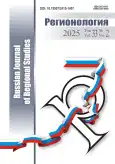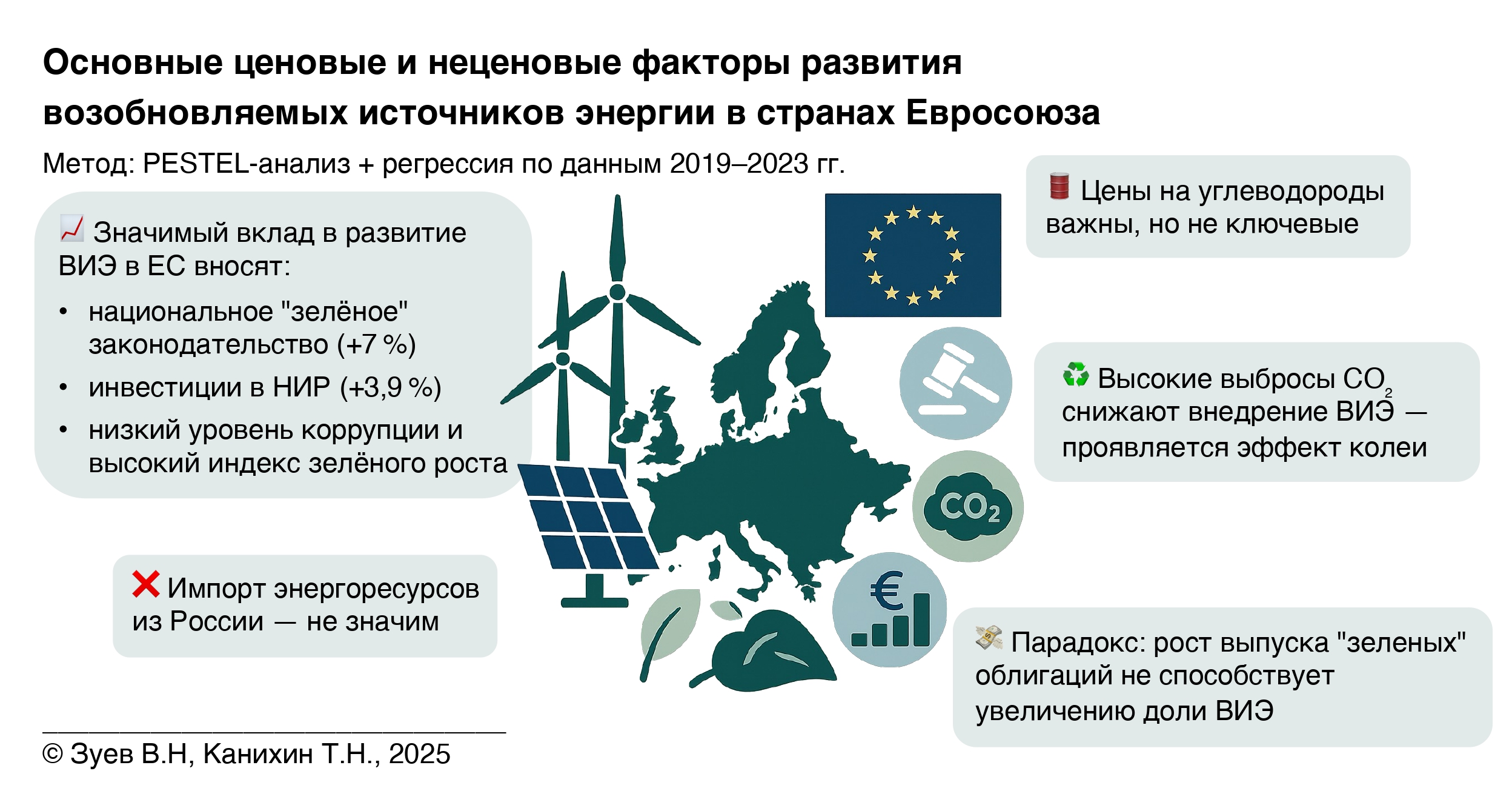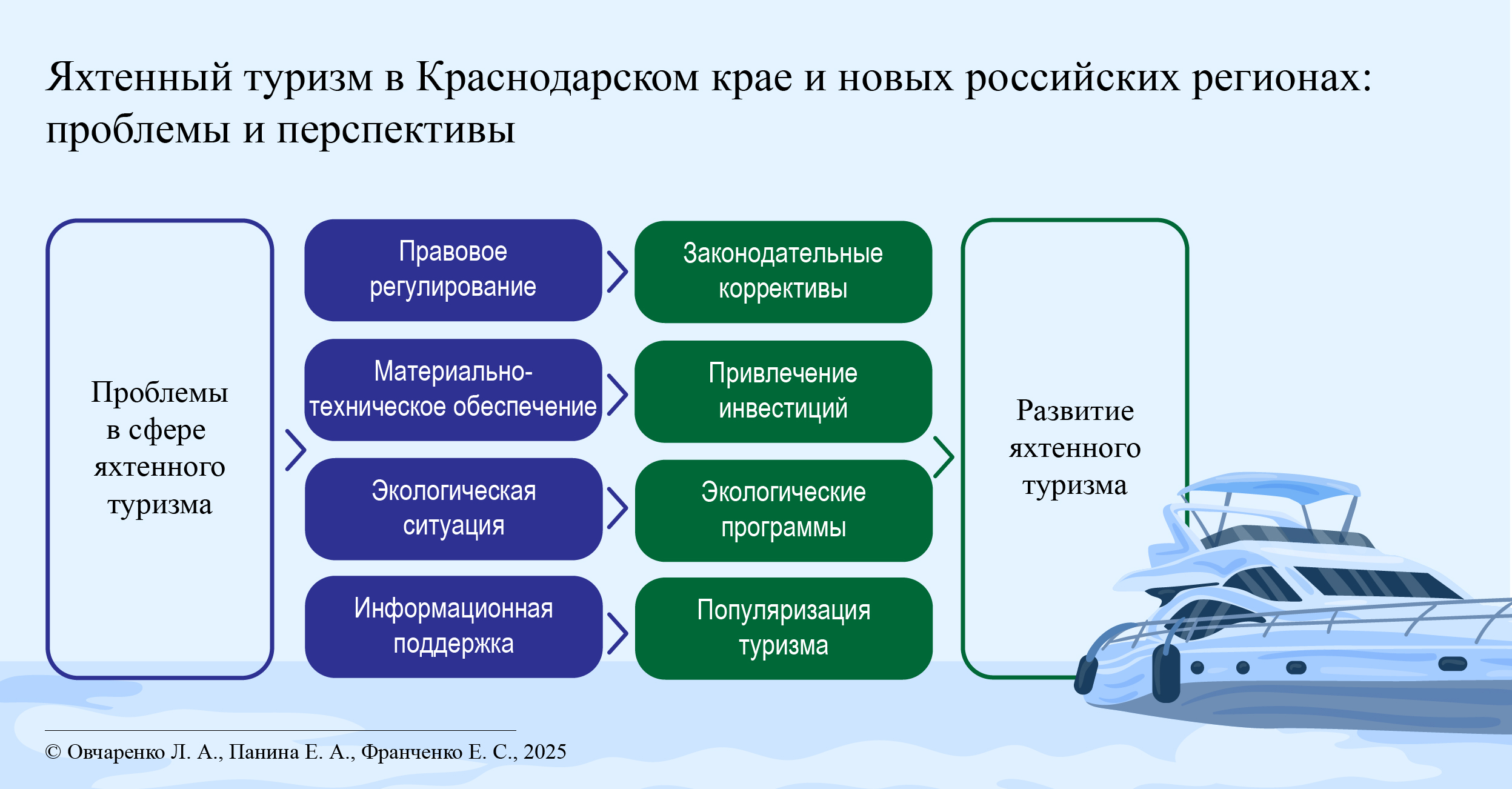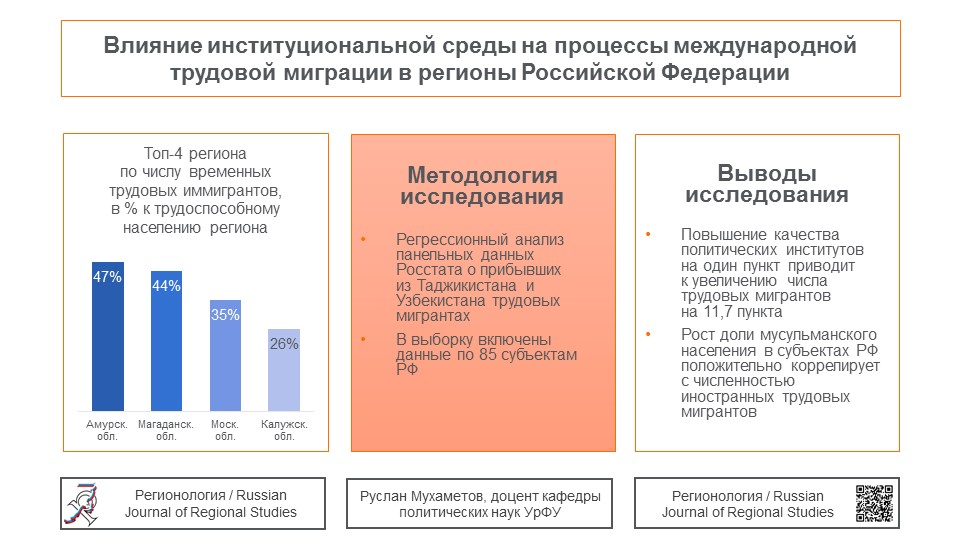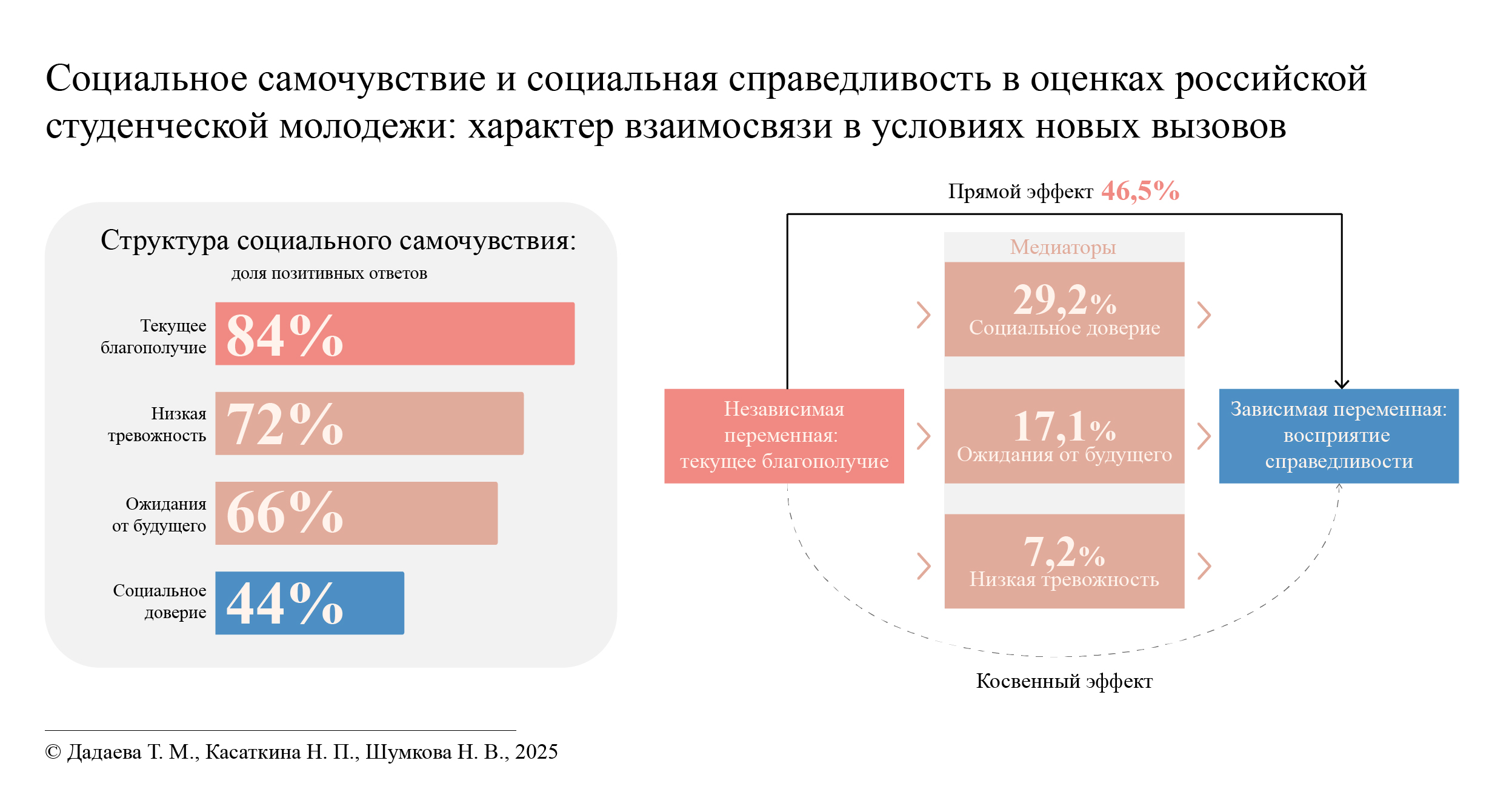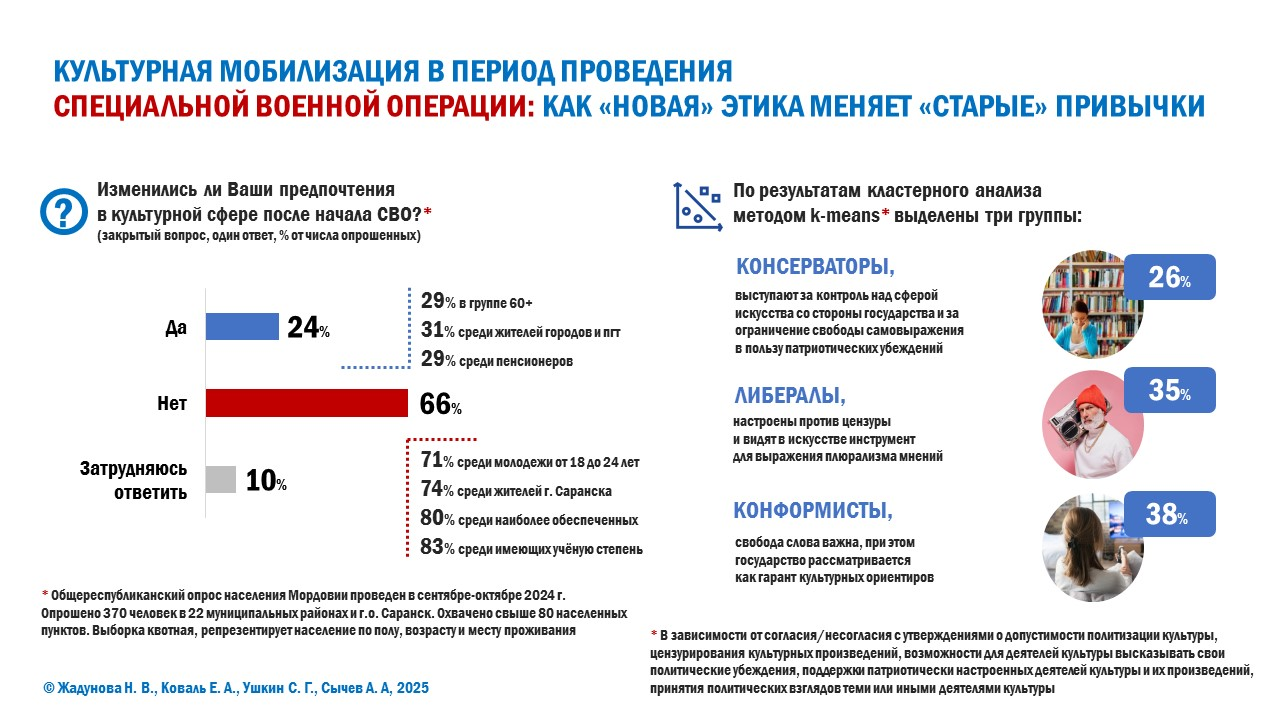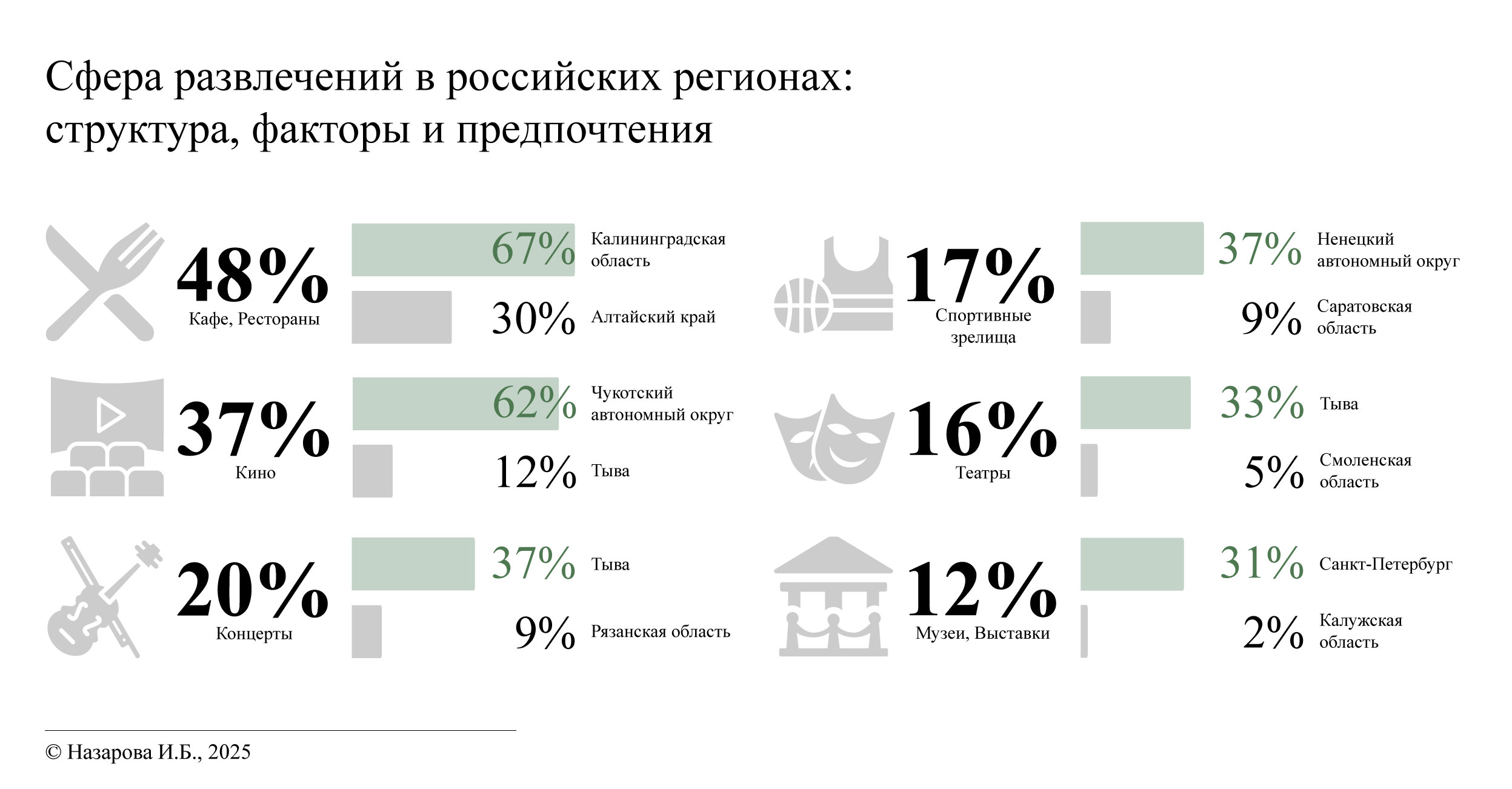Vol 33, No 2 (2025)
- Year: 2025
- Published: 30.06.2025
- Articles: 10
- URL: https://journal-vniispk.ru/2413-1407/issue/view/17769
Full Issue
Regional and Sectoral Economy
The Impact of Technological and Socio-Economic Factors on Personnel Security Elements of the Region
Abstract
Introduction. In conditions of instability, regions face the problems of population outflow, declining quality of labor resources, and growing imbalance in the labor markets. The solution of these systemic problems is of strategic importance for maintaining human resources and national security as a whole. The development of effective mechanisms to ensure personnel security of the region is impossible without an objective assessment of its internal reserves on the basis of economic and mathematical modeling. Due to the relative novelty of the category “personnel security of the region” in the domestic scientific literature there are no studies on the data of the subjects of the Russian Federation on the relationship between the indicators of technological and socio-economic development with the indicators of personnel security, which limits the possibility of developing sound recommendations for the management of regional systems in the context of modern personnel and demographic challenges. The purpose of the article is to assess the impact of socio-economic and technological factors on the elements of personnel security of the region.
Materials and Methods. The research material was statistical data on socio-economic and technological development of 85 subjects of the Russian Federation for the period from 2017 to 2022. The main method of work is regression analysis. The method of end-to-end regression and panel data methods with fixed and random effects were used. Based on the literature review, we selected dependent variables – elements of human resources security (wages, unemployment rate and the number of the outgoing population) and formulated six hypotheses about the relationship between these variables and technological and socio-economic factors of regional development.
Results. The hypotheses about the positive relationship between investment in fixed capital, introduction of technological innovations and wages; about the negative relationship between the factors of socio-economic and technological development and unemployment; about the positive relationship between the number of crimes and unemployment; about the negative relationship between the factors of investment, accessibility of higher education and the number of outgoing population were confirmed. The hypotheses about the relationship between the elements of personnel security and the factors of education accessibility were partially confirmed.
Discussion and Conclusion. The elements of personnel security are mainly influenced by socio-economic factors, while no significant relationship between technological factors and elements of personnel security was revealed. The obtained results expand the theoretical and empirical base of research on the factors of personnel security of regions, socio-economic and technological development; they will be useful in terms of making complex decisions in the field of investment, innovation and socio-economic policy to ensure personnel security of the region.
 186 - 205
186 - 205


Main Price and Non-Price Factors of the Renewable Energy Sources Development in Union Countries of the European
Abstract
Introduction. The article examines the main price and non-price factors of renewable energy development in the EU countries at the present stage. The relevance of studying RES is determined, on the one hand, by the importance of environmental protection within the global climate agenda, on the other hand, by the insufficient coverage of this topic in science. The aim of the study is to identify the main price and non-price factors that ensure the development of RES in the EU countries; the hypothesis is that the volatility of hydrocarbon prices and EU imports of traditional energy sources from Russia is the main factor of RES development in the EU countries.
Materials and Methods. To study this issue, in this paper, possible influence factors have been identified according to the PESTEL methodology. Factors were collected through expert assessment of current trends from open sources. The selected factors were used to construct a semi-logarithmic linear regression estimating the dependence of the share of RES used by the EU country on the selected factors within 2019–2023.
Results. According to the constructed model, the level of corruption, the green growth index, the dummy variable illustrating the existence of a national legal framework in the field of green energy, and the amount of greenhouse gas emissions per capita are significant at the 1 % level of significance; the number of green bonds issued by the country – at the 5 % level; the price of carbon, government spending on R&D, are significant at 10 % significance level; other variables are not significant.
Discussion and Conclusion. The development of national legislation in the field of RES, financing of scientific projects, mainstreaming of the green agenda in civil society with a low level of corruption will provide a solid ground for the development of RES technologies in the EU countries. The results of this study may be useful in the preparation of a strategy for RES utilization in Russia by government agencies, as well as in the consideration of RES development issues in the EU, EU and Eurasian Economic Union (EAEU) integration.
 206 - 220
206 - 220


Yachting tourism in the Krasnodar Territory and new Russian regions: problems and prospects
Abstract
Introduction. Yachting tourism is a promising type of tourism in the Russian Federation, as evidenced by the increased demand for such trips in recent years. In a number of Russian regions, the demand for domestic yachting exceeds supply, which is explained by the still existing difficulties in the development of yachting infrastructure. Recently, there has been a trend of increasing tourist interest in the marine area of the Krasnodar Territory as a promising region in the field of yachting tourism, as well as new Russian territories - Donetsk, Kherson, Zaporozhye regions. This circumstance is due to the trend of strategic development of the Azov-Black Sea coast, namely the construction of marinas, harbor shelters, fuel stations, tourist infrastructure, etc. The yachting infrastructure under construction automatically attracts investors to the tourism sector in the hotel and restaurant sectors, beach, active types of recreation, revives the tourist potential of the territories and contributes to its economic development. Domestic science faces an important task related to the need for scientific and methodological substantiation of promising instruments for the functioning of yacht tourism, the practical implementation of which will ensure the formation of new tourist clusters integrating yacht infrastructure. This will contribute to the compliance of the yacht infrastructure of the Azov-Black Sea coast with the growth rate of tourist interest in this type of tourism, designing a base for promoting new tourist destinations. The purpose of the article is to identify problems and substantiate the prospects for the development of yacht tourism in the Krasnodar Territory and in new Russian territories within the Azov-Black Sea coast, due to the implementation of new investment projects for yacht infrastructure.
Materials and Methods. The study is based on data from yacht clubs and companies specializing in servicing, renting yachts, selling yacht equipment and small boats, organizing yacht cruises: "Storm crew", "International Yacht Training Worldwide", "Mediterranean Yacht Charter". A SWOT analysis of the attractiveness of the Krasnodar Territory, new Russian Azov territories for the active development of yacht tourism was conducted, on the basis of which the competitive advantages of the listed territories were identified, contributing to the activation of popularity and improvement of the investment climate in these regions; generalization and description of information obtained empirically, visual presentation of data.
Results. The concepts of yacht tourism and yachting have been clarified taking into account existing theoretical approaches and world practice; problems that hinder the development of yacht tourism in the Krasnodar Region and in new Russian territories have been identified; the potential of yacht tourism for the development and promotion of regional branding has been determined; key factors for activating the development of yacht tourism have been listed, which should become an impetus for its promotion to the Russian and international levels in order to give coastal territories a special investment status.
Discussion and Conclusion. In Krasnodar Krai and the new Azov regions of Russia, the inefficiency of yacht tourism is associated with the insufficient creation of favorable conditions for investing in the development of this sector, namely, the creation of the necessary infrastructure to satisfy the increased interest of Russians in domestic tourism by reducing the flow of people traveling abroad for the purpose of yachting. The functioning of the yacht charter business is mainly carried out by small and medium-sized businesses, which are financially limited. Therefore, it is necessary to create normally functioning mechanisms of public-private partnership in order to invest in capital-intensive objects of yacht infrastructure, create a professional system for training yacht infrastructure managers, and attract yachtsmen. The tourism sector, including yachting, in the new Russian Azov regions will actively develop as safe and peaceful life is established in these territories.
This study can be used to improve and adjust the process of modernization of the yachting industry of the regions, subjects of tourism activities and state regulation of the economic development of the territories.
 221 - 238
221 - 238


Economic Sociology
Entrepreneurial Migration in the Kaliningrad Region: Exploring Potential and Constraining Factors
Abstract
Introduction. The Kaliningrad Region remains an attractive region for migrants in Russia, despite the increase in risks and threats after 2022. For the Russian exclave, where an active entrepreneurial environment has been formed, the study of migrant entrepreneurs starting new or relocating existing businesses is of considerable scientific interest. The aim of this paper is to study the migration of entrepreneurs to the Kaliningrad region from the point of view of expanding the use of their potential, which is of high practical significance for increasing the involvement of internal migrants in the region’s economy.
Materials and Methods. The study is based on the results of a representative survey of the population of the Kaliningrad region (2024) and in-depth interviews with migrant entrepreneurs from other regions of Russia (2022). Migration aspirations of entrepreneurs, factors of attraction and repulsion of migrant entrepreneurs, as well as opportunities and limitations in realizing the potential of migrant entrepreneurs are revealed. The correspondence between the identified factors, individual and environmental characteristics of migrant entrepreneurs was established in order to determine the migration strategies of entrepreneurs.
Results. Migration attitudes, as well as pull and push factors, have been determined; opportunities and limitations for the realization of migrant entrepreneurs’ potential have been assessed. It is proved that the totality of push and pull factors depends on individual and environmental characteristics, migration and entrepreneurial experience, and financial opportunities. It is found that the surveyed entrepreneurs, self-employed and heads of organizations in the region are characterized by high migration mobility, while the mood to change the place of residence is poorly represented. The key migration strategies of entrepreneurs were identified and substantiated: 1) choosing the best conditions for business, 2) improving living conditions, 3) creative impulse. Recommendations have been developed to increase the involvement of internal migrants in the region’s economy with the purpose of the realization of their entrepreneurial potential.
Discussion and Conclusion. A number of proposed measures and mechanisms of business support were outlined and discussed. Their goal is to promote the active use of the potential of migrant entrepreneurs. It is proved that increasing the level of business development, including at the expense of migrants, allows to strengthen the position of economic security of the Russian exclave
 239 - 256
239 - 256


Influence of the Institutional Environment on the Processes of International Labor Migration to the Regions of the Russian Federation
Abstract
Introduction. The relevance of the research topic is determined by the increasing role of international labor migration in the socio-economic development of Russian regions and the need for effective management of migrant flows. In the conditions of demographic decline and labor shortage, the attraction of foreign migrants becomes an important factor of economic growth. The study of the determinants of international labor migration has often focused on the socio-economic characteristics of destinations. This article examines the impact of the quality of public administration of territories on their ability to attract labor immigrants.
Materials and Methods. The empirical basis of the study was the data of Rosstat, as well as information from the Atlas “Islamic Community of the Russian Federation”. The research method was regression analysis of panel data (fixed effects model).
Results. Statistical processing of the data showed that the constituent entities of the Russian Federation with a higher quality of state governance attract more international labor migrants. At the same time, most socio-economic factors that are traditionally used to explain the attractiveness of the destination territory were not confirmed, although they are indirectly included in the category of “state capacity”. Regression analysis demonstrated a positive impact of the share of Muslim population in the Russian regions on the number (in relative terms) of foreign labor migrants. The concept of “ethnic networks” has not been empirically tested.
Discussion and Conclusion. International labor migrants prefer to come to destination territories with a higher quality of public administration. At the same time, it is important to ensure social integration of immigrants and protection of their rights in order to avoid problems in the host society that are related to socio-cultural differences. The results of the study can contribute to the growth of the efficiency of migration management at the national and sub-national levels, as well as allow forecasting the directions of migration flow.
 257 - 270
257 - 270


Features of Recruitment: Intelligent Text Analysis of Resume and Vacancies
Abstract
Introduction. This study is devoted to the analysis of the peculiarities of personnel selection in the Russian labor market, with an emphasis on the problem of imbalance between the requirements of employers and the expectations of job seekers. The focus of attention is on the differences in the representation of the parties’ demands, which allow systematizing the staffing needs of the economy through the prism of competencies and job responsibilities. The relevance of the study is due to the low conjugality of interaction between the subjects of the labor market in the conditions of digitalization, which generates systemic barriers in job search and recruitment. Meanwhile, this topic is rarely the subject of sociological analysis and is insufficiently represented in the field.
Materials and Methods. An original methodology for analyzing labor market big data was developed, based on 5,347,805 texts of resumes and job postings collected from three largest Russian platforms for the period 2019–2024. Natural Language Processing (NLP) algorithms, including topic modeling and clustering, were used to process the data, enabling the creation of two hierarchical taxonomies: 55 competency parameters and 423 groups of job responsibilities. Statistical analysis included methods of descriptive statistics, correlation analysis, and time-series modeling.
Results. Empirical analysis revealed persistent information asymmetry between employers and job seekers. The parties demonstrate insufficient understanding of the functional purpose of key sections in job postings (competencies and job responsibilities). Job seekers tend to list more competency parameters than required by employers, indicating an exaggerated perception of market demand. A growing interest of employers in certain groups of job responsibilities is observed; however, job postings retain a generalized character, contrasting with the detailed specialization of experience in resumes.
Discussion and Conclusion. The degree of consistency of the requirements of the labor market subjects is analyzed with a focus on the current and future imbalances between the parameters of supply and demand. It is found that the labor market functions under conditions of bounded rationality. Job advertisements fulfill different functions depending on the interpretations of the parties. The parameters of competencies and job responsibilities in the texts of vacancy announcements and resumes do not coincide, which leads to protracted and inefficient processes of candidate selection. The results of the study can be used to develop recommendations for optimizing texts related to job search and personnel selection
 271 - 293
271 - 293


Social Structure, Social Institutes and Processes
Societal Well-Being Perceptions and Social Justice Assessments among Russian University Students: the Nature of the Relationship in the Context of New Challenges
Abstract
Introduction. The study of societal well-being perceptions and social justice assessments among Russian university students is necessitated by the impact of regional inequality (including quality of life) on youth life trajectories, potential risks of social tension, and insufficient research on the mediating mechanisms linking these constructs. The study aims to analyze components of societal well-being and the nature of their connection with conceptions of social justice among Russian students, along with regional characteristics of this interrelationship.
Materials and Methods. An online survey was conducted (October-November 2024; n = 1.209 full-time students) across four regions with differing quality of life: Moscow Oblast, Tatarstan, Mordovia, and Kalmykia. Societal well-being was measured through indices of social well-being, future expectations, social trust, and anxiety. Satisfaction with social justice was assessed on a 5-point scale. Descriptive statistics, correlation analysis, regression analysis, and the Sobel test were employed.
Results. The composite index of student societal well-being revealed polarization: 54 % of respondents were categorized as having “good”/“excellent” well-being, while 18 % reported “poor” well-being. Within the structure of societal well-being, positive assessments of current well-being predominated (84 %), whereas social trust demonstrated lower levels (44 %). A strong positive correlation was identified between subjective well-being and perceptions of social justice (ρ = 0.63; p < 0.001). The regression model (R² = 0.216; p < 0.001) confirmed the influence of social trust (β = 0.220), and the Sobel test verified its mediating role (accounting for 29.2 % of the effect). Regional differentiation in normative conceptions of justice was identified, correlating with the objective quality of life in the regions and the societal well-being of students.
Discussion and Conclusion. The connection between societal well-being and justice perceptions is confirmed. The low level of societal well-being among 18 % of youth and regional differences highlight the need to address challenges in strengthening social trust, providing targeted support for vulnerable student groups, and accounting for territorial specificities. Longitudinal studies of the relationship between societal well-being and justice conceptions present a promising research direction
 294 - 315
294 - 315


“Us” or “Them”: Internal Migrants in the Perceptions of the Siberian Cities’ Citizens (on the Example of Irkutsk, Krasnoyarsk and Tomsk)
Abstract
Introduction. The study examines the process of civic identity formation in contemporary Russia in relation to the production and crossing of boundaries between “imagined communities”. Most existing research focuses on how cross-border migration influences the host community’s rethinking of its identity. At the same time, internal migrants, being part of the same society, can impact the identification of the “us-group” within the country. Studying this issue is crucial for understanding the configuration and structure of civic identity from the perspective of maintaining and preserving social solidarity. The authors analyze the influence of internal migration on the perceptions of residents in three Siberian cities regarding “us” and “them.” The aim of the study was to identify the mechanisms by which members of the “us-group” construct boundaries with respect to internal migrants, as well as the degree of permeability of these boundaries.
Materials and Methods. The authors based their research on 9 focus groups with citizens of Irkutsk, Krasnoyarsk, and Tomsk, aged 18–36, conducted in 2023. Respondents were recruited using snowball sampling. The material was analyzed using thematic axial data coding, performed in the MAXQDA program, and discourse analysis.
Results. It was found that respondents perceive both internal and cross-border migrants as individuals who fall into the gaps of a dense communication network, where integration into this network is the primary criterion for belonging to the “us-group” of civic identity holders. The study found that internal migration contributes to the formation of boundaries between locals and newcomers at the local level. Communication breakdowns occur between urban residents and rural migrants, which serve as the main reason for locals to exclude newcomers. However, the permeability of borders is more evident for internal migrants than for cross-border migrants. The research confirms that the key factors for the integration of newcomers into the host community are their inclusion in local social networks and their ability to navigate and use the urban environment.
Discussion and Conclusion. Internal migrants are able to bridge the gap to the host society much faster than cross-border migrants, which supports the thesis of strengthening civic identity in Russia. Nevertheless, the emerging communication breakdowns carry a potential for conflict and pose a threat to social solidarity. In this respect, the findings of the study may be useful in the development of migration policies, not only by drawing attention to the issue of internal migration, but also by highlighting key problems whose solution becomes a strategic priority.
 316 - 334
316 - 334


Sociology of Culture
Cultural Mobilization During the Special Military Operation: How “New” Ethics Changes “Old” Habits
Abstract
Introduction. In Russia, after the start of the Special Military Operation in Ukraine, large-scale transformations accelerated, affecting all spheres of activity, including cultural consumption practices. A number of people in the creative professions publicly supported or, on the contrary, condemned what was happening, which influenced their perception by government officials and fellow citizens. However, attitudes towards authors and performers are closely related to attitudes towards the objects of cultural consumption they produce. This study was undertaken in order to find out how people’s cultural preferences change (and whether they change) (at the level of a single region) during the period of the Special Military Operation.
Materials and methods. The research was conducted from September to November 2024 in the Republic of Mordovia by the method of questionnaire survey, implemented on the “Yandex. Forms” platform. A total of 370 residents of the region from more than 80 settlements were interviewed. The quota sample represents the population by gender, age and place of residence. The research is of an exploratory nature.
Results. In the context of the Special Military Operation, the majority of respondents maintained their cultural preferences; every fourth stated that they had changed them. Less stable cultural consumption practices are characteristic of older people, pensioners with low incomes; more stable ones are characteristic of young people living in the capital of the region, as well as of people with a high level of education and income. Three clusters have been identified, allowing participants to be classified according to their attitude toward the current situation in the sphere of cultural consumption: liberal, conformist, and conservative. The liberal cluster unites those who oppose censorship and excessive state control. The conservative cluster includes supporters of reasonable restrictions on freedom of speech, the need to support figures demonstrating patriotic beliefs, and to cancel those who are recognized as foreign agents. The conformist cluster was made up of respondents with the least stable habits of cultural consumption, oriented towards those narratives that are associated with the preservation and reproduction of traditional values and promoted by the state.
Discussion and Conclusion. Cultural consumption correlates with the level of economic and cultural institutionalized capital. Changes in cultural consumption under conditions of tension occur mainly on the basis of coincidence or inconsistency of political beliefs of the consumer and the producer of the cultural product. The most significant factor affecting cultural consumption in the context of the Special Military Operation is the official information agenda broadcast by the state. The obtained results may be useful for managers responsible for the formation and implementation of cultural policy.
 335 - 353
335 - 353


Entertainment in Russian Regions: Structure, Factors and Preferences
Abstract
Introduction. Entertainment plays a key role in modern lifestyles, acting as an important component of leisure and well-being. Despite their importance, comprehensive research on entertainment consumption in Russia remains limited. This paper aims to fill this gap. We analyze the structure of entertainment preferences among the country’s residents with a focus on socio-demographic and regional differences.
Materials and Methods. The study used data from the Comprehensive Observation of Living Conditions of the Population for 2022, conducted by Rosstat, covering 117,634 respondents aged 15 years and older. Statistical methods, including Spearman correlation, were used to analyze trends and relationships. Comparison of data for 2018 and 2020 allowed us to assess the recovery from the pandemic and long-term changes in entertainment consumption.
Results. The most popular types of entertainment: visiting restaurants/cafes (48 %) and cinemas (37 %). Gender and age differences are significant: young people more often choose movies (73 %), women choose theaters (21 %), men prevail among spectators at sporting events (24 %). Urban residents are more actively involved in cultural life (go to theaters, museums) compared to the rural population. Regional differences are pronounced: Chukotka (62 % of cinema attendance) and St. Petersburg (33 % of theater attendance) represent extreme values.
Discussion and Conclusion. The findings of the study indicate the influence of digitalization, urbanization and socio-economic factors on entertainment choices. While urban infrastructure supports a diversity of leisure options, rural areas face accessibility challenges. The results emphasize the need for targeted cultural policies to address regional disparities.
 354 - 368
354 - 368























